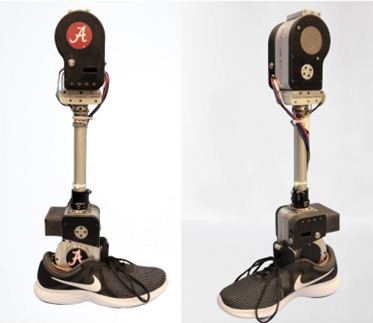Problem:
Existing lower-limb prostheses are mostly unpowered, i.e., cannot supply power to support users' walking. As such, amputees fitted with unpowered prostheses suffer from many problems such as unnatural walking and increase energy consumption. Although powered prostheses have appeared on the market, they are still heavy and expensive. Furthermore, existing powered prostheses are either powered knee or ankle prostheses, and there is a lack of lower-limb prosthesis products with both knee and ankle joints powered.
Solution:
Researchers at the University of Alabama have developed a powered lower-limb prosthesis with a unified joint actuator design for a prosthetic knee and ankle (a.k.a. Common-Core-Components Knee-Ankle Prosthesis: C3KAP). The C3KAP's design allows the powered knee and ankle to share the same basic structure, with minimal customization for each joint. Additionally, the C3KAP provides a wide range of joint rotation (over 100 degrees), reducing discomfort, hip exertion, and higher energy consumption.

Benefits:
·Mechanics and uniformity promote mass production and affordability compared to other products in the market
·Compact, lightweight, and provides wide range of joint rotation
·User-friendly features that significantly reduce the mechanical complexity of the prostheses compared with other actuators
Patent:
Publications: